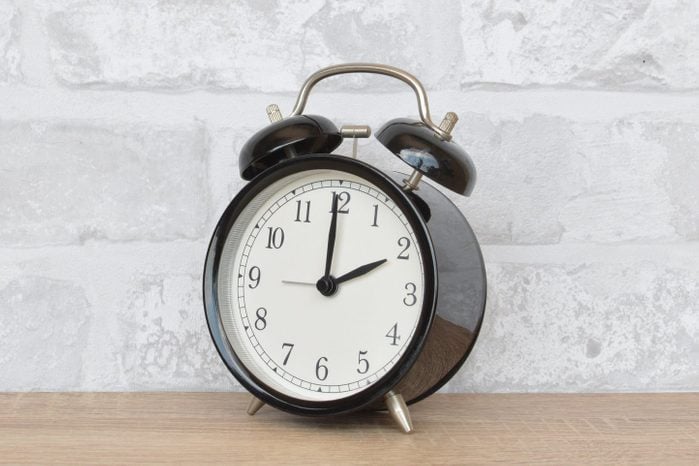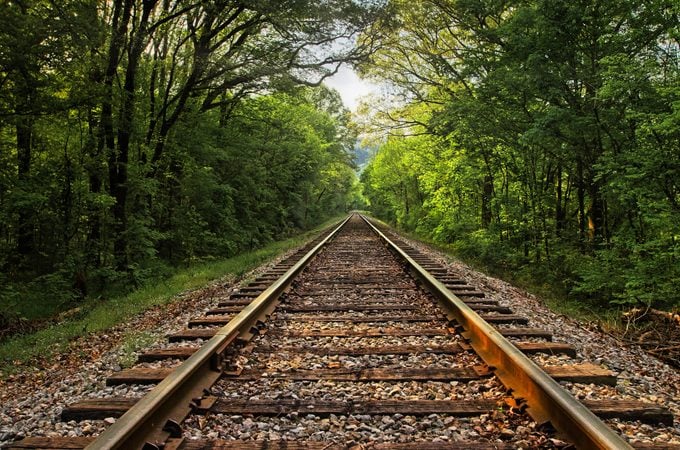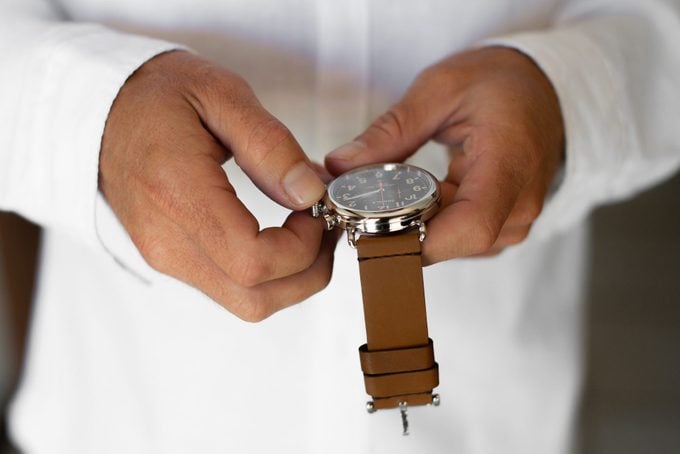Why Does Daylight Saving Time Start at 2 a.m.?
Updated: Apr. 21, 2024

As the saying goes, "spring forward, fall back." But why does the time change at 2 a.m.?
Beloved by some and bemoaned by others (as evidenced by calls to get rid of it altogether), daylight saving time is the twice-annual practice of changing the clocks in the spring and fall. In the United States, the tradition always starts on the second Sunday of March before coming to a close on the first Sunday of November.
Despite its long-standing history, the act of setting your clocks forward an hour and back an hour continues to be questioned. Some wonder: Why does the time change at 2 a.m.? Wouldn’t midnight make a more practical time? And how was the day determined?
Read on for the answers below, along with a brief history lesson on daylight saving time.
Get Reader’s Digest’s Read Up newsletter for more knowledge and insights, humor, cleaning, travel, tech and fun facts all week long.
What is daylight saving time (DST)?

On the second Sunday of March each year, shortly before the spring equinox, clocks are set forward one hour at 2 a.m., in an effort to allow folks to make better use of daylight while they are awake. By contrast, clocks go back in the fall, leading to the popular and easy-to-remember saying “spring forward, fall back.”
Daylight saving time, also referred to as daylight time or summer time (in the U.K. and other regions of Europe), was once proposed to the city of Paris in a satirical essay by Benjamin Franklin (yes, that Benjamin Franklin!). Despite the DST concept resurfacing throughout the years, it didn’t become law in the United States until 1918.
Also, an important note while we’re on the topic: It’s daylight saving time, not—as is commonly but mistakenly said—daylight savings time.
Why does daylight saving time start at 2 a.m.?

Instead of turning the clocks at midnight, as might be expected, the time change happens at 2 a.m. because of railroad schedules. When DST was introduced during World War I, it was one of the few times when there were no trains traveling on the tracks. “Sunday morning at 2 a.m. was when they would interrupt the least amount of train travel around the country,” Michael Downing, author of Spring Forward: The Annual Madness of Daylight Saving Time, explained to Time.
According to the online museum WebExhibits, the 2 a.m. change was also a convenient middle ground between midnight—when changing the clocks would require the date switching back to the previous day—and later in the morning, when early shift workers and churchgoers might be affected.
Plus, daylight saving is all about conserving natural light during the spring, summer and early fall days, making March the ideal month to put the DST practice into effect.
What happens at 2 a.m. daylight saving time?
When the time changes at 2 a.m. in March, the clocks jump ahead an hour. Meanwhile, when daylight saving time ends in November, about six weeks after the fall equinox, the times are reversed and clocks go back an hour. Luckily, your smartphones, tablets and computers typically adjust to the time and date change automatically, so you won’t have to worry about being late—or early—for church, yoga, brunch or any other Sunday-morning plans.
When does daylight saving time spring forward and fall back in 2024?

In 2024, daylight saving time starts on Sunday, March 10, and ends on Sunday, Nov. 3. Here are the dates for the next three years:
- 2025: Sunday, March 9, to Sunday, Nov. 2
- 2026: Sunday, March 8, to Sunday, Nov. 1
- 2027: Sunday, March 14, to Sunday, Nov. 7
Why trust us
At Reader’s Digest, we’re committed to producing high-quality content by writers with expertise and experience in their field in consultation with relevant, qualified experts. We rely on reputable primary sources, including government and professional organizations and academic institutions as well as our writers’ personal experience where appropriate. We verify all facts and data, back them with credible sourcing, and revisit them over time to ensure they remain accurate and up to date. Read more about our team, our contributors and our editorial policies.
Sources:
- Time: “Why Does Daylight Saving Time Start at 2 a.m.?”
- WebExhibits: “When We Change Our Clocks”



